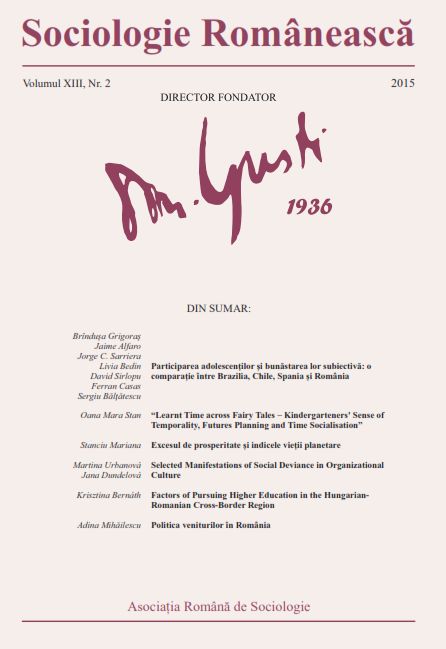Selected Manifestations of Social Deviance in Organizational Culture
Selected Manifestations of Social Deviance in Organizational Culture
Author(s): Martina Urbanová, Jana DundelováSubject(s): Law, Constitution, Jurisprudence, Business Economy / Management
Published by: Editura Eikon
Keywords: normality; norms; social deviance; nepotism; clientelism; cronyism; organization culture
Summary/Abstract: The objective of this paper is to contribute to the discourse about the issues of trust in management, authority and meaningfulness of human labour, which are inseparably connected with effectiveness, productivity, competitiveness of companies, organizations and the whole society as well. The authors want to provide a conceptual theoretical framework for further studies of social deviance in organizational culture, and that is why it has a form of a theoretical study providing a platform for future empirical researches. This study is opened with defining the concept of social deviance as a deviation from the normality and by reminding of difficulties related to determination of normality. The organizational culture is defined as a coherent set of values, norms and patterns of behaviour that determine the manners and forms of behaviour of employees, their relationships inside (but also outside) the social system of the organization. Further, the paper is focused on selected social deviances, which undermine the effectiveness of organizational structures to fulfil their objectives and missions. Based on the empirical analyses, the attention is paid particularly to nepotism, clientelism and cronyism as tools for reaching latent goals of individuals and groups in the organization. The issue is set in the contemporary society and solved from the view of social psychological mechanisms of human behaviour in the group. The authors also remind the issue of responsibility, conscience and the negative effects of conformity, group thinking, obedience and the authoritarian leadership, which is even more obvious when the employees are under the pressure (e.g. economic sanctions). In conclusion are outlined the tools of control of clientelism and similar phenomena, and possibilities of applications of Weber’s socio-analytical model of bureaucracy in organizations.
Journal: Sociologie Românească
- Issue Year: 13/2015
- Issue No: 02
- Page Range: 55-66
- Page Count: 12
- Language: English

